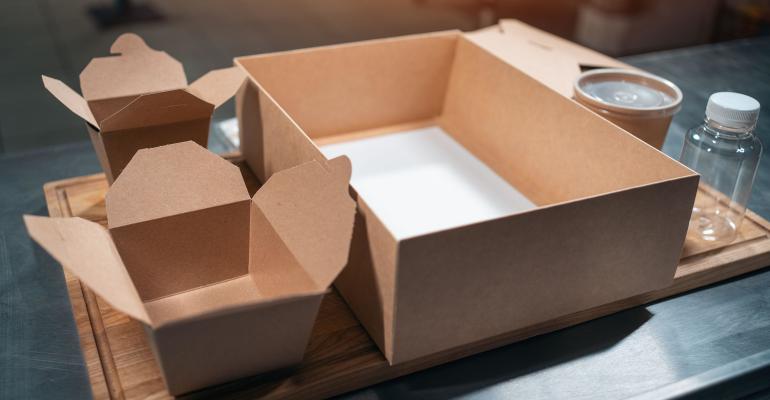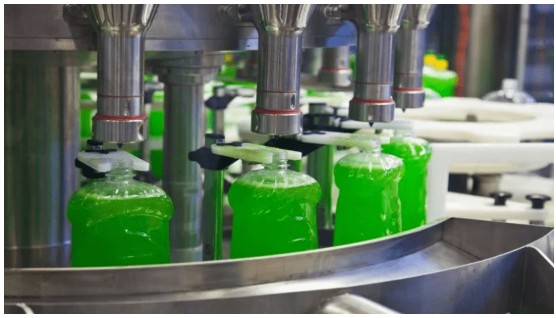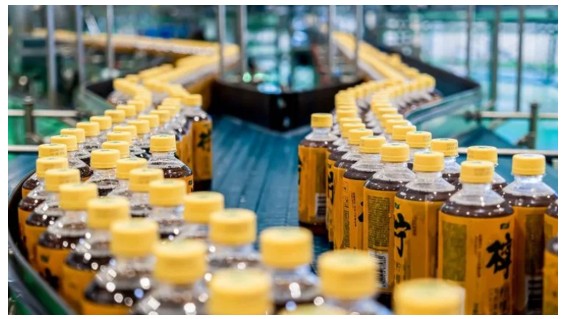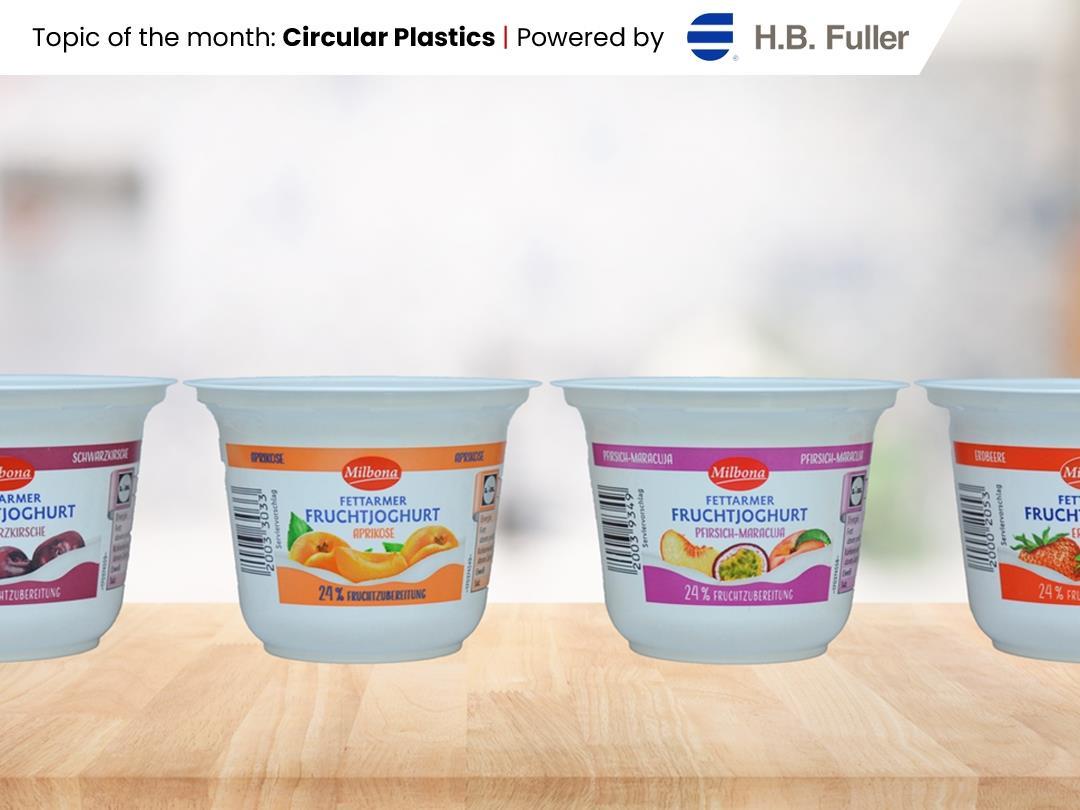As consumer demand for takeout and on-the-go foodservice continues to explode, restaurants and other food delivery services need more from their packaging to meet or exceed elevated post-pandemic expectations.
Two decades ago, most food takeout-and-delivery was still centered around two main cuisines — pizza and Chinese food. Certainly, there were other outliers, but those two options had dominated most of the delivery scene for decades. But over the past five to 10 years, and especially since the onset of the COVID-19 pandemic, the restaurant and on-the-go eating industries have witnessed a seismic shift in the way people consume food.
Today, food delivery is a market behemoth, with a global worth more than $150 billion, according to data from McKinsey. That market has more than tripled since 2017 and, in the United States alone, it has more than doubled since the pandemic began. This follows years of steady 8% annual growth.https://0c8f92d1a348dfb4fa44c5ce67051a80.safeframe.googlesyndication.com/safeframe/1-0-38/html/container.html
And while dine-in continues to have a large share of a restaurant’s revenue, digital ordering and delivery have grown nearly 300% faster than dine-in traffic since 2014. Even restaurants that hadn’t traditionally offered food delivery — including high-end dining — were forced to adapt during the pandemic and have since maintained these delivery options as consumers look for more flexibility in the way they consume prepared foods.
Look and taste go hand-in-hand.
So, now what? Despite the pandemic’s eventual turn into its endemic phase, it seems clear that food delivery, takeout, and on-the-go dining will continue to increase in market share in the near- and long-term future. Added convenience and the ability for delivery to reach new consumers where they live have truly changed the game. Restaurants and other food establishments will have little choice but to adapt to ensure their takeout and delivery options can meet the dine-in experience they’ve worked so hard to perfect.
In this rapidly growing market, staying competitive requires much more than offering delicious (and consistently delicious) food flavor at a competitive value. What used to be a mere afterthought, food presentation and packaging are now becoming the biggest factors in providing customers with a dependable, high-quality delivery, takeout and on-the-go eating experience.
From Michelin Star-winning restaurants and global food chains to local eateries and food trucks, food packaging has quickly become one of the most talked about aspects of food delivery and takeout. Without a proper food packaging strategy, restaurants and food retailers risk sending their customers away with a product that doesn’t accurately reflect the quality, taste, and effort that goes into the food they prepare.
Today, restaurants and other food retailers will need to keep a number of factors top of mind when it comes to the meeting the exploding demand for takeout and on-the-go foodservice. Here are five keys to developing a sound food packaging strategy in 2022 and beyond.
1. Choose food packaging that enhances, not detracts from, your brand and your menu.
With more restaurants and food establishments getting into the takeout and delivery game than ever before, the stakes have no doubt gotten higher. Gone are the days when restaurants and takeout spots could drop their foods in a hinged Styrofoam container, hand it off to the delivery driver, and call it a day. There is simply too much competition when it comes to takeout and delivery to “pack it in” when it comes to packaging.
Unfortunately, restaurants and food retailers lose a significant amount of control between the time the food is prepared and when it eventually reaches the customer’s home. Whether it’s the material, the color, the structure, the size or the shape, food packaging plays a critical role in maintaining the food’s same beautiful look-and-feel from restaurant to the kitchen table. When working with your packaging vendor, choose options that fit your menu, portions, and overall aesthetic you’re working to achieve.
2. Use food packaging that’s designed for food type and temperature.
Packaging can and should improve the aesthetic of takeout and delivery. Those food retailers that understand this will have a selection of packaging options designed for hot foods vs. cold foods and liquids vs. solids.
With the increase in delivery and demand placed on delivery drivers and apps, having food packaging that maintains food’s temperature and integrity as long as possible after it leaves the restaurant is becoming even more important. Reputations are on the line now, and there’s nothing worse than ordering takeout or delivery and getting home to see the food packaging is soggy because it doesn’t have vents to help to manage moisture or the food’s temperature became too cold or too warm because packaging doesn’t fully close and/or wasn’t meant for that specific food type.
3. Go with sustainable packaging, but choose wisely.
Let’s face it — food packaging is a visible representation of a restaurant or food retailer’s sustainability efforts. For many consumers, the idea of getting sustainable packaging is no longer a nice-to-have — it’s a necessity, with 55% of Americans saying they are “extremely or very concerned about the environmental impact of product packaging.” And while many consumers may not choose takeout or delivery for the first time based on your sustainable packaging, it can be a reason many become repeat customers. Even local and state regulations have forced restaurants and food retailers to ditch their old destined-for-the-dump packaging in favor of more environmentally friendly options.
Today, there are many options to choose — from paper products made with recycled content and fully compostable pulp products to plastic options that can be recycled as well. As recycling acceptance continues to grow, it still requires diligence from all parties in the value chain to understand what materials your local markets actually accept. Composting infrastructure is limited in many areas, but it does continue to grow and presents another option for customers.
When working with your packaging vendor to choose products, make sure to consider current and future end-of-life scenarios to make the most impact in the markets where you operate. It is always important to ensure that the fitness-for-use of the product is achieved while balancing sustainability goals. In some cases, compostable options may be what’s best; in others, simply going with easily recyclable plastic containers, like polyethylene terephthalate (PET), may be the way to go.
4. Consider the customers’ at-home plating experience.
These days, the assumption should be that customers will eat their food delivery or takeout directly out of the package and won’t spend time putting it on a plate of their own. With that, restaurants and food retailers should also assume that the way they put food in its packaging is the way people will see it as they eat it. Now, for something delivered family-style like a pizza that almost always goes on a plate, this might not matter as much. But for an individual serving multi-course meal or higher-end dining experience where customers are eating directly out of the packaging, this is crucial to think about.
Fortunately, the reality today is that high-end dining delivery doesn’t need to mean high sacrifice when it comes to presentation. As part of maintaining that dine-in experience after the food leaves the restaurant, the food packaging design and selection plays a critical role in a customer’s enjoyment of the food. Be sure to go with table-ready packaging that allows the kitchen to present the food to customers as if they were at the restaurant themselves.
5. Manage different food packaging options with space and cost constraints.
Understandably, after seeing the points above, it can be easy to think that to provide the best takeout and delivery experience requires a dozen or more different types of packaging to fit every restaurant’s individual menu item. Not so.
The best food packaging vendors will work with your specific menu and customer needs to develop a shortlist of options that can be used in a variety of different ways, without sacrificing the way food looks or how the packaging performs. Think options that work for both hot and cold foods or selecting a single base tray that fits multiple lid options — high domes for big sandwiches and salads and flat lids for less hefty items. Finding the right packaging mix is key to success and the right packaging partner can help.
With tight kitchen spaces and even tighter budgets, it should take only a handful of different packaging products to fit a restaurant’s full menu or a larger food retailer’s array of hot and cold options. Those suppliers that try to push too many custom designs aren’t looking out for the best interests of the restaurant and/or food retailer.
If there’s anything restaurants and food retailers have learned over the past few years, it’s to always be adaptable and responsive to whatever is thrown their way. Those food retailers that adjust the quickest will be more able to stay competitive in this changing landscape. The world of food delivery and takeout has changed dramatically in just a short period of time, and it’s never been more valuable than it is now to partner with trusted leaders in the food packaging space.
Source:
https://www.packagingdigest.com/foodservice/5-packaging-keys-happy-foodservice-customers







